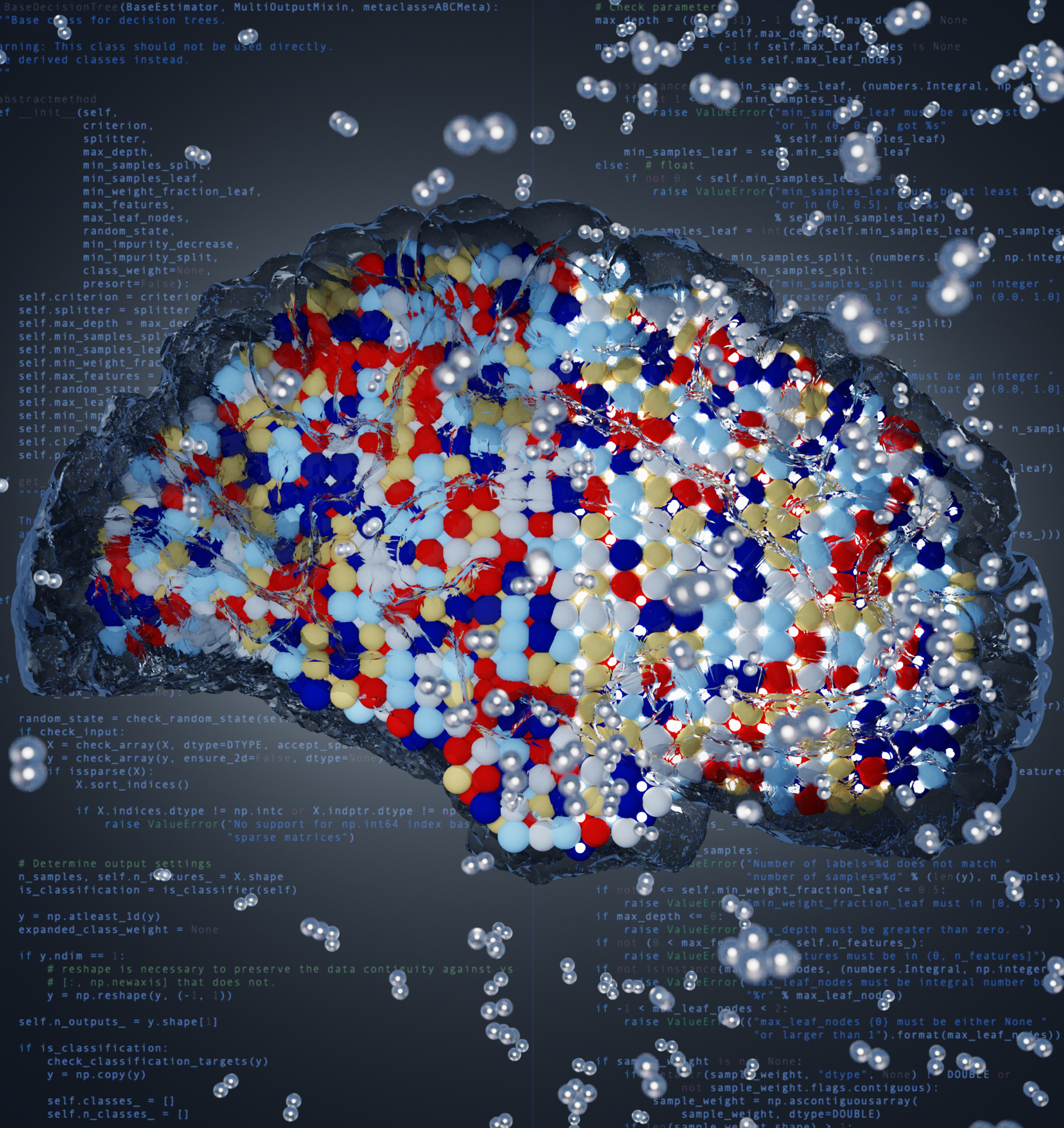Reviewed by Alex SmithSep 21 2021
A group of materials scientists and computer scientists from Sandia National Laboratories collaborated with a few international researchers to create 12 new alloys — and model hundreds more — over the course of more than a year.
 Researchers from Sandia National Laboratories and international collaborators used computational approaches, including explainable machine learning models, to elucidate new high-entropy alloys with attractive hydrogen storage properties and direct laboratory synthesis and validation. Image Credit: Illustration by Matthew Witman.
Researchers from Sandia National Laboratories and international collaborators used computational approaches, including explainable machine learning models, to elucidate new high-entropy alloys with attractive hydrogen storage properties and direct laboratory synthesis and validation. Image Credit: Illustration by Matthew Witman.
The study shows how machine learning can help expedite the future of hydrogen energy by enabling the simple creation of hydrogen infrastructure for consumers.
Mark Allendorf, Vitalie Stavila, Sapan Agarwal and Matthew Witman are part of the Sandia team that authored a paper describing the new approach together with scientists from Ångström Laboratory in Sweden and Nottingham University in the United Kingdom.
There is a rich history in hydrogen storage research and a database of thermodynamic values describing hydrogen interactions with different materials. With that existing database, an assortment of machine-learning and other computational tools, and state-of-the art experimental capabilities, we assembled an international collaboration group to join forces on this effort.
Matthew Witman, Sandia National Laboratories
“We demonstrated that machine learning techniques could indeed model the physics and chemistry of complex phenomena which occur when hydrogen interacts with metals,” added Witman.
A data-powered modeling capability of estimating thermodynamic properties can quickly increase the research speed.
When such machine learning models are constructed and trained, they take only seconds to execute and can thus quickly screen new chemical spaces: in this study, 600 materials that exhibit the potential for hydrogen storage and transmission.
This was accomplished in only 18 months. Without the machine learning it could have taken several years. That’s big when you consider that historically it takes something like 20 years to take a material from lab discovery to commercialization.
Mark Allendorf, Sandia National Laboratories
Potential to Change Hydrogen Energy Storage
The researchers also discovered something else in their study — outcomes that have drastic implications for small-scale hydrogen generation at hydrogen fuel-cell filling stations.
“These high-entropy alloy hydrides could enable a natural cascade compression of hydrogen as it moves through the different materials,” stated Stavila, adding that hydrogen compression is conventionally performed through a mechanical process.
Stavila explained how a storage tank is built with several layers of these different alloys. Upon pumping hydrogen into the tank, the gas is compressed by the first layer as it moves through the material.
It is further compressed by the second layer and so on by all of the layers of different alloys. This naturally renders the hydrogen usable in motors that produce electricity.
The pressure of hydrogen generated under atmospheric conditions at sea level is about 1 bar — the metric unit of pressure. For using hydrogen to power a vehicle or any other engine from a fuel cell, it should be pressurized, or compressed, to a considerably higher pressure.
For instance, hydrogen at a fuel-cell charging station should have a pressure of 800 bars or higher to allow it to be dispensed as 700-bar hydrogen into fuel-cell hydrogen vehicles.
As hydrogen moves through those layers, it gets more and more pressurized with no mechanical effort. You could theoretically pump in 1 bar of hydrogen and get 800 bar out—the pressure needed for hydrogen charging stations.
Vitalie Stavila, Sandia National Laboratories
The researchers have been continuously refining the model. However, as the database is already public through the Department of Energy, once better insights into the method are achieved, the use of machine learning could power major advancements in various fields, such as materials science, noted Agarwal.
This study was funded by the Hydrogen and Fuel Cell Technologies Office within the U.S. Department of Energy, Office of Energy Efficiency and Renewable Energy, and through Sandia’s Laboratory Directed Research and Development program.
Journal Reference:
Witman, M., et al. (2021) Data-Driven Discovery and Synthesis of High Entropy Alloy Hydrides with Targeted Thermodynamic Stability. Chemistry of Materials. doi.org/10.1021/acs.chemmater.1c00647.